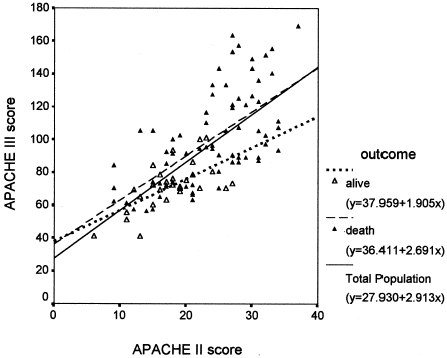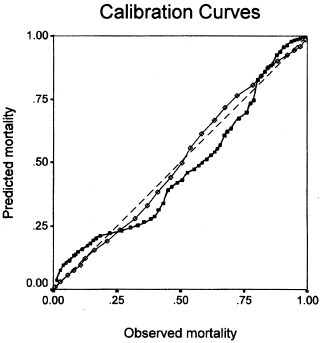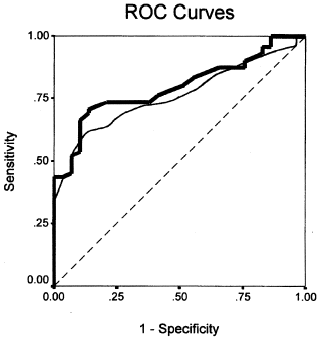Figures & data
Table 1. Patient Characteristics
Table 2. Presumptive Causes of Acute Renal Failure
Figure 1. Correlations of APACHE II and III scores. The APACHE III scores correlated significantly (p<0.001) with APACHE II scores for the entire group, the group of survivors, and the non-surviving patients.

Figure 2. Calibration curves for APACHE II and III. The diagonal line represents the line of ideal prediction (predicted mortality = observed mortality) for APACHE II (open diamonds) and APACHE III (solid squares). Calibration curves above the diagonal indicate that actual mortality was greater than predicted (i.e., underestimation by the predictive model).

Figure 3. Receiver operating characteristic curves for APACHE II (solid, curved line) and APACHE III (bold, curved line). Diagonal line, line of chance performance.

Table 3. Hosmer–Lemeshow Goodness-of-Fit Statistics for APACHE II and III
Table 4. Survivors in the Very High Risks Group (APACHE II score>23)